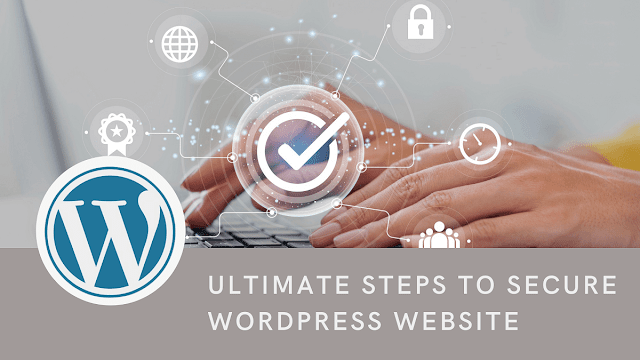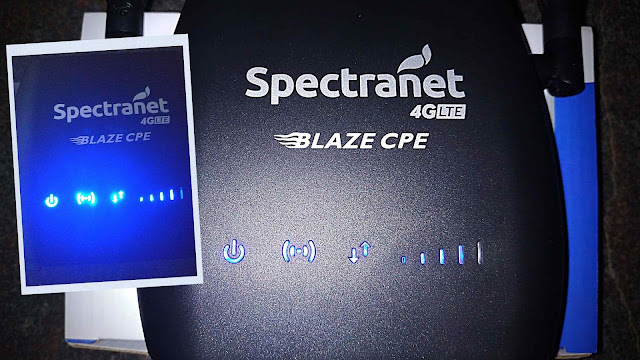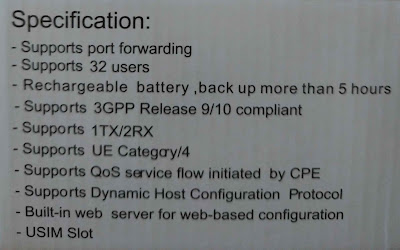With software powering 43.2% of all websites, WordPress has established itself as the most widely used content management system (CMS). Unfortunately, because of its widespread use, hackers have found ways to exploit the system's flaws.
This is not to say
that WordPress is insecure; users' lack of security understanding is often to
blame for vulnerabilities. Therefore, you should implement preventative
security measures before hackers target your website.
Your website is a
virtual business card informing visitors about your company, products, and
services. You may win over new followers and strengthen bonds with your current
audience.
That's why your
website must never go down for maintenance. If it suddenly becomes infected
with malware, runs very slowly after being hacked, or disappears entirely, it
will hurt your reputation.
If hackers get access to your website, you risk losing revenue from fewer visitors, fewer purchases, and fewer ad impressions. Fixing it up to full functioning will cost money. Losing search engine ranks is another possibility. To save money and keep your reputation intact, you should ensure your website is protected and locked down.
Common Reasons for WordPress's Security Problems
Google has recently
made public a ranking of hackers' most common entry points to get into
websites. Let's take a closer look at a few of them:
·
Hacker-accessible
passwords: Attacks using brute force are among the most
prevalent methods hackers use to get into websites. They are utilizing bots to
test a variety of usernames and passwords at a rate of thousands of possible
combinations per second until they discover the correct one.
· Unsafe plugins and themes: The vulnerabilities that may be identified in plugins and articles provide a reasonably simple entry point for malicious actors. The developers of high-quality pieces send patches to address these vulnerabilities as part of regular updates.
However, not all WordPress users regularly update
their websites. Free versions of expensive plugins and premium
WordPress themes
that have been cracked typically include backdoors that allow hackers to enter
your site and do anything they want.
·
Poor security
policies: It is much simpler for anyone to get access
to your website if you have lax security measures and permit weak passwords,
for example, or if you provide site access to those without need.
WordPress Website Security Measures
Listed below are
some WordPress security best practices that can assist you in further
protecting your website.
Keep WordPress Core Updated
Ensuring that
WordPress is always running the most recent version is essential to preserve
your website's reliability and safety. After receiving a complaint of a
security hole in WordPress, the core team immediately begins working on a new
software version that will include a remedy for the problem. If you do not
regularly update your WordPress website, you may be using an older version of
WordPress that has known security flaws.
One of the easiest
methods to strengthen WordPress security is to update to the latest version.
However, nearly half of all WordPress sites use an out-of-date version of the
software, leaving them vulnerable to attack.
Once you've logged
into your WordPress dashboard, look to the left menu for "Updates" to
see if a newer version of WordPress is available. If it indicates that your
performance is outdated, you should upgrade immediately. If you don't want your
site to run an out-of-date version of WordPress, you should watch the following
update release dates.
WordPress is a
favorite target for cybercriminals, spammers, and identity thieves because of
its massive user base. Be sure to leave yourself vulnerable by sticking with an
out-of-date version of WordPress. Just set up automatic updates and stop
thinking about it.
Use a Managed
WordPress Hosting service incorporating automatic updates if you'd like an even
less time-consuming approach to keeping your site up-to-date. You should also
update any plugins and themes used on your WordPress site. Incompatibilities
between older plugins and themes with the latest version of WordPress may lead
to broken functionality and security holes.
Use Strong Passwords
Password theft is
the primary vector for WordPress hacker efforts. Using complex, site-specific
passwords may make this more challenging. They include but are not limited to
the WordPress dashboard, FTP, database, WordPress hosting, and domain-based
email addresses.
Strong passwords may
be difficult to remember, so many novices avoid using them. The bright side is
that you need to remember to memorize complex passwords. A password manager is
available for usage.
Another thing you can do to lessen the danger is to prevent other people from accessing the administrative section of your WordPress website unless necessary. It is essential to familiarize yourself with user responsibilities and features in WordPress before adding additional user accounts and writers to your WordPress site, especially if you have a big staff or want guest authors to contribute content.
Use Two-Factor Authentication
Logging in using a
two-factor authentication strategy necessitates the usage of a second
authentication factor. The first is the traditional login and password, and the
second is to employ an additional piece of hardware or software to verify your
identity.
Most of the world's
most popular websites, like Google, Facebook, and Twitter, provide the option
to do so. Your WordPress site, too, may be equipped with this feature. The
Two-Factor Authentication plugin must first be installed and enabled. After
activation, you must visit the Two Factor Authentication link in the WordPress
dashboard's sidebar.
Install SSL Certificate
These days, every
website may benefit from using SSL (Secure Sockets Layer). In the past, SSL was
essential for ensuring the safety of online financial transactions. However,
Google now understands its significance and gives sites with an SSL certificate
a higher ranking.
Sites that handle
private information like login credentials or financial data must use SSL
encryption. All communications between a user's browser and your server will be
sent and received in plain text if you don't utilize an SSL certificate. In
other words, hackers can decipher this. Using an SSL makes your site safer
since important information is encrypted before being sent from the user's
browser to your server.
Purchasing an SSL
certificate ranges from around $70 to $199 per year for websites willing to
receive sensitive information. There's no use in shelling out for an SSL
certificate if you're not collecting private data. Nearly all web hosting
providers make available to their customers a free Let's Encrypt SSL
certificate that can be installed on their respective websites.
Use a Secure WordPress Theme
Try not to use any
old WordPress theme simply because it looks nice; this is similar to installing
a plugin from an unknown source. Why? Because doing so may put your site at
risk of harm and make it harder to fix any problems that do arise.
Choose a theme that
follows WordPress's guidelines to avoid exploits the article may have created.
Paste the URL of your site (or any theme's live demos or WordPress site) into
the W3C's validator to see whether it complies with WordPress' criteria for
using a specific theme. Check out the WordPress theme directory for
alternatives if your current theme doesn't adhere to the standards.
You may feel
confident using any of the themes from this collection with your installation
of WordPress. Try one of the premium
WordPress themes HubSpot suggests, or look for a different one on a
reputable theme store.
Limit Login Attempts
WordPress users are
not restricted in the number of times they may try to log in. The WordPress
admin section is vulnerable to brute force attacks because hackers may guess
valid passwords by testing millions of possible combinations.
Therefore, you
should restrict login attempts to protect the site from hacking. Limiting
unsuccessful logins is another good way to watch for malicious activity on your
site. Most people can access the system after one or two tries. Therefore, you
should be wary of suspicious IP addresses surpassing the maximum number of
attempts.
Using a plugin to
restrict the number of failed login attempts is one technique to beef up
WordPress security. Numerous excellent alternatives exist, including:
·
Limit Login Attempts
Reloaded: Allows administrators to set a maximum number of
unsuccessful login attempts for individual IP addresses, allowlist or blocklist
people, and update visitors on the time they have before access to the website
is suspended.
·
Loginizer: Includes
two-factor authentication, reCAPTCHA, and security questions for logging in.
·
Limit Attempts by
BestWebSoft: IP addresses are immediately added to a deny
list and blocked when they have reached the login attempt limit.
This WordPress
security feature has the danger of accidentally locking out a valid user of the
WordPress administration panel. However, several options are available for
accessing WordPress accounts that have been accidentally locked.
Use Security Plugins
Frequently checking
your website's security for malware is a time-consuming job, and if you don't
often refresh your knowledge of best practices for coding. You could only
recognize you're seeking a piece of malware that's been put into the code if
you verify your knowledge periodically.
Fortunately, others
have come to terms with the fact that only some are developers by creating
WordPress security plugins. When you install a security plugin, it will scan
your site for viruses and watch it around the clock.
A highly recommended
WordPress security plugin is Sucuri.net. They provide services such as website
firewalls (for a price), file integrity monitoring, remote malware scanning,
blocklist monitoring, effective security hardening, post-hack security
measures, security alerts, and audits of security-related activities.
Use Secure Hosting
Choosing a host with
multiple security measures is the easiest way to protect your website. Choosing
a low-cost hosting service can seem appealing because the money you save can be
put to better use elsewhere in your business.
Don't give in to
this temptation, however. It can and usually does lead to nightmares in the
future. It is possible that all of your data will be deleted and that your
website URL will start pointing to a new location.
By spending a little
extra on a reliable hosting provider, you can rest assured that your website is
protected on several fronts. In addition, if you choose a dedicated WordPress
hosting service, your site will load much more quickly.
You are suggested
WPEngine among the numerous available hosts. Support is available at all hours
of the day and night, every day of the year. The cherry on top is that they
have fair pricing.
Backup Your Website Regularly
Preventing
irreparable damage to your site is as easy as maintaining a regular backup. If
you have a backup from not too long ago, you should be able to restore your
website to its state before it was hacked or damaged in some other manner. With
this information, you can immediately address the problem and move on from it.
Hold onto many
copies of your data. Having at least three recent backups accessible is
recommended since even the most recent backup might include problems that have
yet to be discovered. Maintain copies of your data in several off-site places,
including the cloud and external hard drives.
Create a regular
backup plan and stick to it. The time and frequency are up to you; however,
there are several good guidelines to follow. Before modifying your site,
generate an additional backup to your usual backup plan. It's highly
recommended that you have a recent backup before taking any security-enhancing
measures.
Conclusion
Website security is
more critical now than ever before. Hackers are targeting more and more
WordPress sites. Therefore, owners must take precautions to keep their data
safe and secure. The recommended practices suggested in this blog post will
help website owners protect their WordPress site against malicious attacks.
The core of your
WordPress installation should be kept up-to-date, and strong passwords should
be used. Further, two-factor authentication should be activated, SSL
certificates should be installed, and secure themes should be used. Moreover,
the number of failed login attempts should be limited, security plugins should
be activated, and certain hosting providers should be selected. Regular backups
should also be performed.
Owners of websites
should take the duty of keeping their sites secure very seriously. The data of
the website's owner and its users are safer on a secure website. In the event
of a security breach, users run the risk of having personal information stolen
or compromised.
Therefore, protecting a WordPress website is essential for protecting its data and users. Website owners may lessen their exposure to cyber assaults, data breaches, and other security risks by adopting the recommended practices discussed in this article. It's crucial to take precautions to protect WordPress websites and not take security for granted.





















